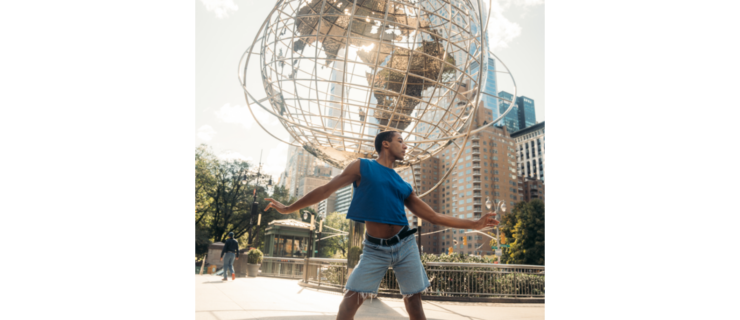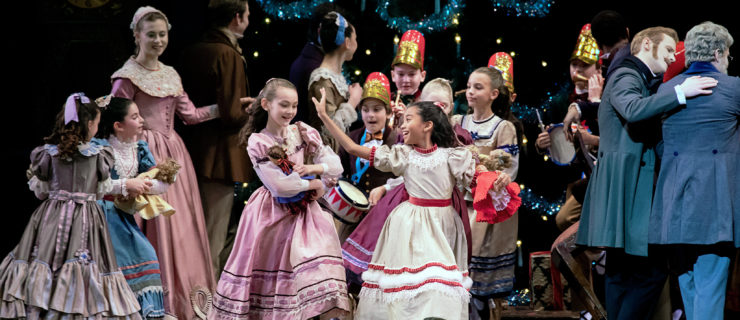Building Character: What Happened to the Popularity of Character Dance?
Most full-length classical ballets feature several character dances—troupes of dancing peasants, parades of visiting princesses. Today, those dances are often seen as “filler,” interludes to give the principals a breather between classical variations. But back in the 19th century, when many of these ballets premiered, character dances had deep cultural significance. Ballerinas, equally versed in character and classical techniques, would perform character dances in stand-alone programs. (Picture a Paris opera house full of cheering crowds, demanding multiple encores after their favorite star performs a knockout mazurka.) How did something that used to be so popular, and once provided critical context, fade from prominence?
From Romantic Nationalism to Romantic Ballets
Most of the full-length ballet “classics” premiered in Europe during a time when people couldn’t travel very easily. The character dances that can feel extraneous today were originally intended to give a clear sense of a different country’s culture.
“Character dance came about during the Romantic ballet period, roughly 1830–1850. This was when Romantic nationalism occurred,” says Anthony Shay, professor of theater and dance at Pomona College. Romantic nationalism was a European philosophy that looked to peasants for “pure” examples of dance, music, language, and folklore. Romantic nationalists thought that rural people enjoyed a close relationship to the land, and thus their cultures reflected an authentic sense of place, untouched by outside influence—a point of pride during a period of rapid political change. The philosophy was also a way for European nations to assert their superiority as they fought over fluctuating boundaries and overseas empires. “Folk dance came to be considered part of the essence of a nation,” Shay says.
Choreographers worked character dance into ballets, where it made crowd-pleasing appearances alongside burgeoning classical technique. Susan Leigh Foster, distinguished professor in the Department of World Arts and Cultures/Dance at University of California, Los Angeles, says that many Romantic ballets featured a plot with an inherently dancey main character—a sylph, or a doll—and then add character dance to establish a sense of place. That’s how we ended up with La Sylphide‘s Scottish reel and plaid kilts, and Coppélia‘s showstopping mazurka scene, which screamed “Polish” to 19th-century audiences.
In reality, character dance was so stylized by the time it hit an opera house stage it could hardly be considered authentic. “Choreographers would take a few steps that looked very characteristic and use them to signal to the audience that they were seeing something exotic,” Shay says. Ballet patrons were wild about character dances, but not about the people who originated them. They didn’t want to see dancing peasants; they wanted to see their favorite ballerinas interpret peasant dances. “There was no actual folk material transported into any of the ballets,” Shay says. For all the supposed national pride in folk culture, there was still a clear hierarchy separating folk dances from their stylized counterparts.

PNB dancers in Coppélia (Angela Sterling, courtesy PNB)
From Abstraction to Character Companies
It’s hard to determine exactly when or why ballet training, which once celebrated virtuosity in character and classical techniques, began to prioritize the classical. We do know that by the end of the 19th century, ballet had consolidated as a universal training regimen. “Ballet was seen as broad, abstract and ‘untainted’
by localized folk dances,” Foster says. “The basic shapes and movements of ballet
started to become mathematical shapes.” By the late 20th century, “character dance” referred to dances in ballets and to ballet classes that referenced specific locales and contrasted with the more elevated technique of classical ballet.
A century after character dance was first used to signify national pride, totalitarian rulers in Europe, including the USSR’s Joseph Stalin, began to stage character dance performances for similar purposes. “You couldn’t have actual folk dances, because those weren’t appealing to powerful people. They were a sign of backwardness,” Shay says. Instead, character dance was used to assert national superiority, even as its contextualizing role in the ballet repertoire faded away.
At Stalin’s request, a dancer named Igor Alexandrovich Moiseyev created the first folk dance company, giving it a professional identity separate from classical ballet. The “folk dance” he created and staged, however, was an invented tradition. “Moiseyev took the character dancing he had learned, and altered into a new genre of dance to represent multiple groups,” Shay says. The Moiseyev Dance Company still performs today.
Connecting to the Source
We know very little about how character dance factored into 19th-century ballets. But we can still educate ourselves about historical references and contemporary, authentic folk dance, which will make ballet richer for audiences and performers alike. “You can’t leave out character dance,” Shay says. “It has been much reduced in popularity and in what it signifies, but you can go deeper.” To help students feel closer to a ballet’s original context, Shay encourages them to take classes in folk dance styles—and to remember that all dances are created in a particular time and place, by a particular people.




